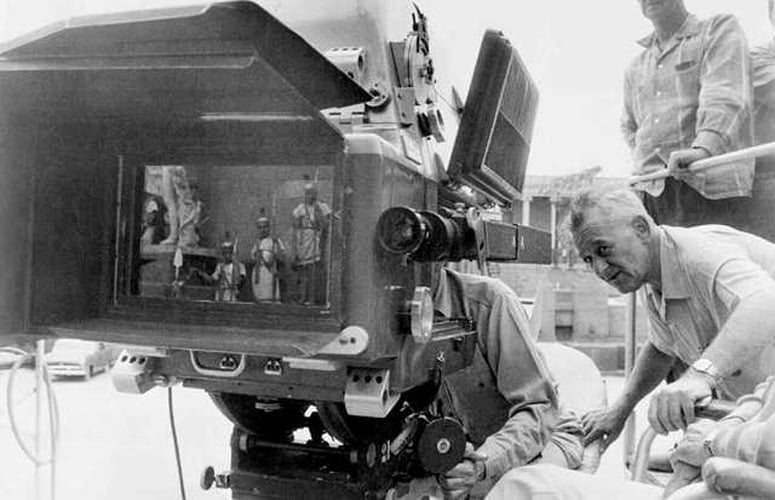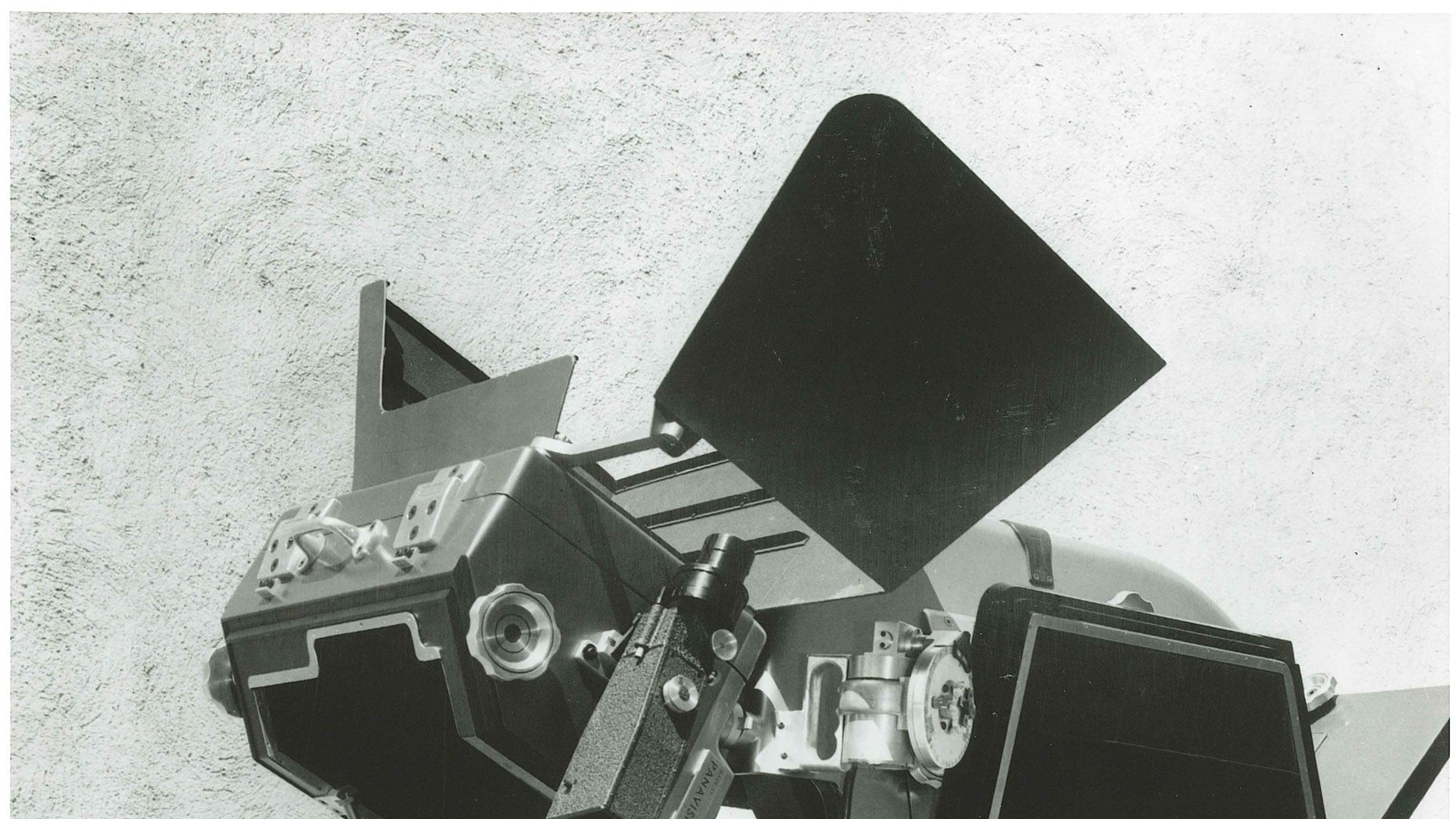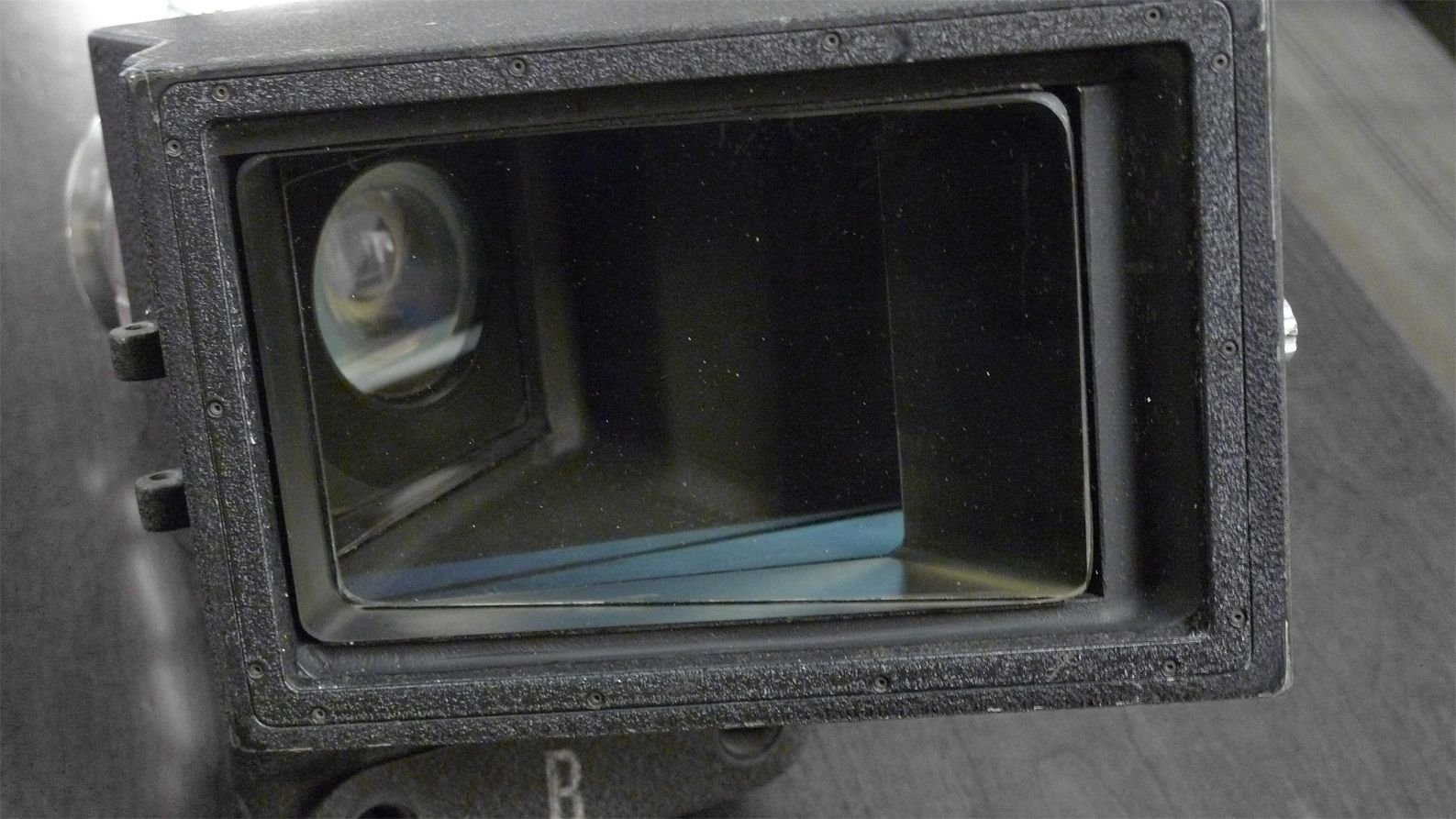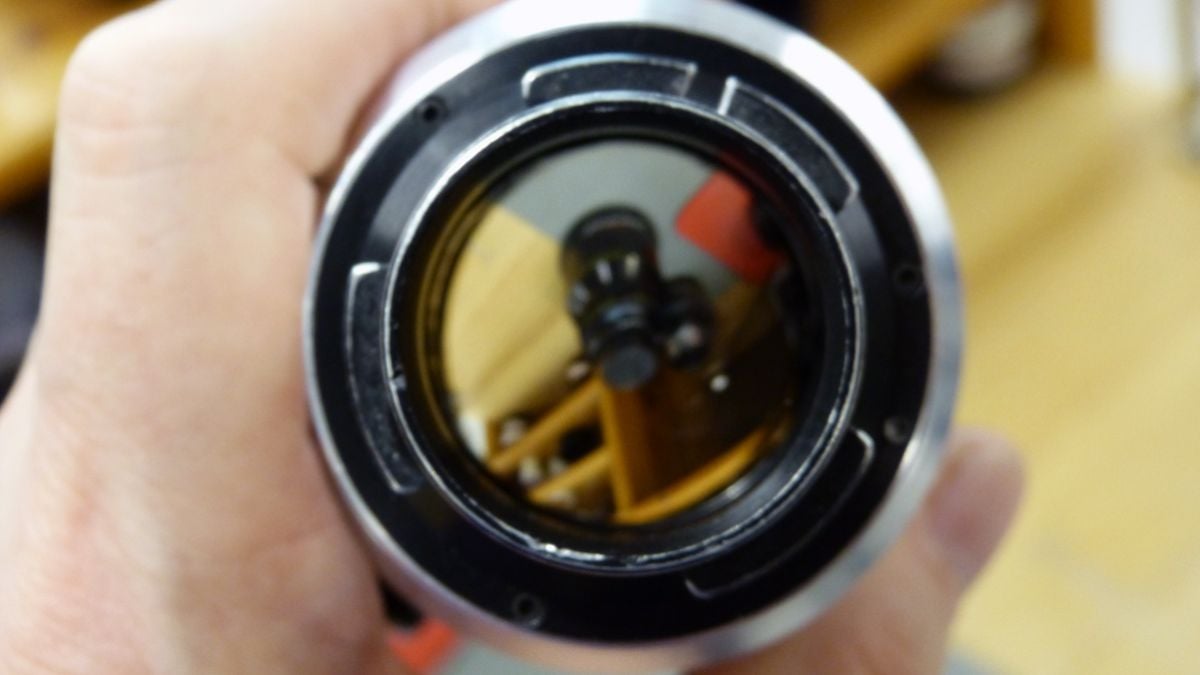
Large Format: Ultra Panavision 70
Large formats are a key development in current cinema, and I hope to write several posts on the subject in the coming months. This post is about Ultra Panavision 70.
The Hateful Eight
Congratulations to Robert Richardson, ASC, for his richly deserved Oscar nomination for the cinematography of The Hateful Eight! The film by Quentin Tarantino was shot in Ultra Panavision 70.
My colleague Michael Goldman did a great job detailing the cinematography of this Western in the December 2015 issue of American Cinematographer. Michael interviewed Richardson, first assistant Gregor Tavenner and Tarantino, among others. This post expands and illustrates my sidebar for Michael’s article, and focuses on the technology of Ultra Panavision 70.
Below are some photos from the article, by Andrew Cooper, SMPSP:




The Ultra Panavision 3
Many years ago, I worked at Panavision, and during a recent trip to Los Angeles, I visited my old friends there to document the Ultra Panavision 70 tools and process. In particular, I spoke with the “Ultra Panavision Three”: Bob Harvey, Jim Roudebush and Dan Sasaki, who spearheaded the re-invention of this 50-year-old format for The Hateful Eight.

Bob Harvey offers: “Projects like The Hateful Eight are what we at Panavision relish. We listened to the filmmakers' desires and needs, and did our best to honor their vision. Dan Sasaki led an entire team from technical to manufacturing to make this happen. Dan redesigned a full set of 65mm anamorphic lenses to bring this format into the 21st century. When Quentin and Bob talked about long takes, our engineers, led by John Rodriguez, rapidly designed and manufactured 2,000-foot magazines for 65mm film.”
50 Years Ago
Ultra Panavision 70 was launched in 1957 as "MGM Camera 65" and was renamed Ultra Panavision in 1960. The following films were shot with the process:
- Raintree County (1957) – credited as MGM Camera 65
- Ben-Hur (1959) – credited as MGM Camera 65
- Mutiny on the Bounty (1962)
- It's a Mad, Mad, Mad, Mad World (1963) ***
- The Fall of the Roman Empire (1964)
- The Greatest Story Ever Told (1965) ***
- The Hallelujah Trail (1965) ***
- Battle of the Bulge (1965) ***
- Khartoum (1966) ***
- The Hateful Eight (2015)
*** According to Wikipedia, these films were also screened in “single-projector Cinerama."
Panavision’s Dave Kenig notes that some scenes of How the West Was Won (1962) were shot in Ultra Panavision, as well as the 1988 Japanese short An Homage to D. W. Griffith.
The early camera systems were composed of non-reflex Mitchells encased in a huge blimp with an external parallax viewfinder on the side.



1.25 squeeze
Ultra Panavision optics create a mild 1.25 anamorphic squeeze of the 2.2:1 image area, resulting in an ultra-wide 2.76:1 aspect ratio on the screen. The image area of Ultra Panavision 70 is three times that of 35mm anamorphic. My diagram below compares the area of Ultra Panavision 70 and 35mm anamorphic prints, and their respective horizontal expansion.

Lenses
Dan Sasaki reminds us that the Ultra Panavision System lenses were first used in 1957 with non-reflex 65mm cameras. Some lenses had to be reworked to clear the mirror shutters of the updated Studio and High Speed 65mm cameras, which were also fitted with new motors, electronics and heaters, as well as an improved reflex viewing system.
Dan provided the filmmakers of The Hateful Eight with 15 Ultra Panavision lenses, with eight focal lengths ranging from 35mm to 400mm. Some lenses were just refurbished, some were recoated and some had their spherical components swapped, while others — the 40mm, 50mm, 135mm, 180mm and 190mm — were brand new builds.
A circular ring on top is squeezed on the bottom by the mild 1.25 anamorphosis of an Ultra Panavision lens (credit Benjamin B)
The Ultra Panavision lenses squeeze the image with two different optical techniques: traditional front anamorphic element, or a distinctive pair of prisms that give the lens an unusual wedge shape. In addition, one of the lenses allows you to vary the squeeze from 1.25 to 1.50 — an adjustment that could make an actor look thinner. I took photos of a few of the lenses:







Dan adds: “We kept as much of the vintage optics as we could, but we had to modify some of them to clear the mirror shutter. The older lenses are not perfect, but they aren't soft, either; they offer a unique quality in between. For the new builds, we degraded the optics by changing the air gaps of the lens to induce circle aberrations, to match the visual theme of the older optics.”
Dan explains that circle aberrations in the Ultra lenses create “a gentle focus roll-off, a gradual blurring that tends to blend things and enhances visual-depth cues. It's like shading the drawing of a flat circle to make it look like a sphere.” Artistically, he describes the resulting image as having a “dappled, impressionistic look.”
System 65 Studio Camera
The Hateful Eight was shot with 65mm negative and transferred to 70mm prints for projection. (The extra 5mm print width was used in the past for soundtracks.) Richardson and his crew used two modern 65mm camera models: the Studio 65 and the 65 HS. Director of Mechanical Engineering John Rodriguez led the team that designed and built three 2,000' magazines to allow Tarantino to shoot longer takes than those afforded by the existing 1,000' mags, which run 8 minutes at 24 fps.
The System 65 Studio was the A camera on The Hateful Eight, and I spent some time documenting the camera on a workbench with the help of Jim Roudebush and Robert Aguirre in Panavision's service department.




















Film Projection
In addition to widespread digital projection, The Hateful Eight was projected in 70mm film in some 100 movie theaters for a "roadshow" conceived by Tarantino. Co-producer Shannon McIntosh told me that The Weinstein Co. sought out Chapin Cutler, principal and co-founder of Boston Light & Sound, to help prepare the theaters for this presentation. McIntosh stated that Cutler was “brought on board before we shot one frame of film” to have time to buy, prepare and develop all the equipment needed.


The year-long project involved buying and upgrading 120 used 70mm projectors (including spares). Cutler estimated that about 90 percent of the theaters running the film required a full installation that included platters, bulbs, splicers and audio DTS playback. He said, “The process has been mammoth. Every projector has been stripped down, put back together again, and gone through tests. We replaced the bearings, gears, drive systems and motors. We retrofitted and rebuilt the lamp houses. We tried to make this Murphy-proof.”
The production commissioned Schneider Optics to design and manufacture 100 projection lenses for the short throws of multiplexes, and purchased used lenses for the longer distances in older theaters. Cutler explained that they chose to use large 2K or 3K Xenon bulbs “to get more light spread on the big 70mm rectangle,” adding that the roadshow lenses would be stopped down F2.8 or F3.2 to increase depth of focus.
Future?
What is the future of Ultra Panavision 70?
Ultra Panavision 70 lenses were recently used on an Alexa 65 by cinematographer Greig Fraser, ASC, ACS for Rogue One: A Star Wars Story, directed by Gareth Edwards. The marriage of 50-year-old lenses with a large-format digital camera is a sign of our times.
Links and Thanks
- YouTube: The Hateful Eight Featurette - Ultra Panavision (2015) - Quentin Tarantino
- panavision.com: Large format System 65
- variety.com: Old Lenses Give Depth to The Hateful Eight
- empireonline.com: Film Studies 101: Ten Movie Formats That Shook The World by Owen Williams
- thorlabs.de: Anamorphic Prism Pairs
- blsi.com:Boston Light & Sound News
- vimeo: 70MM of Hateful by Andrew Walker
- thefilmbook: Rogue One Set Vist with Greig Fraser, ASC, ACS - Part 1
My thanks to my friends at Panavision for their help with this post.
Thanks also to Shannon McIntosh and Chapin Cutler.
A big thanks to my colleague Michael Goldman for sharing material for his article on The Hateful Eight.
Photo Credits to Benjamin B. unless otherwise noted.


